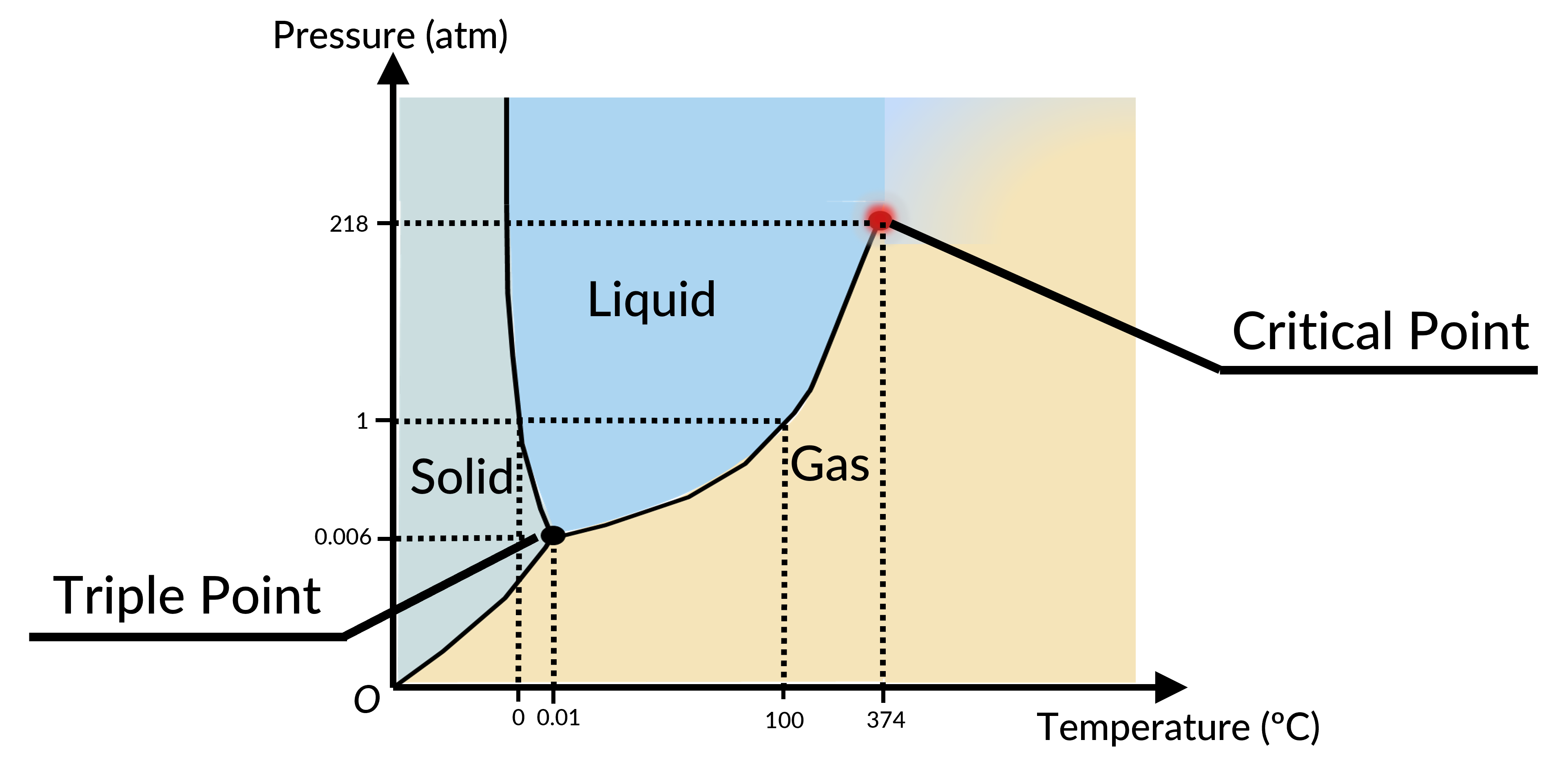19.9 : Phase Diagram
The phase of a given substance depends on the pressure and temperature. Thus, plots of pressure versus temperature showing the phase in each region provide considerable insights into the thermal properties of substances. Such plots are known as phase diagrams. For instance, in the phase diagram for water (Figure 1), the solid curve boundaries between the phases indicate phase transitions (i.e., temperatures and pressures at which the phases coexist).

As the pressure increases, the boiling temperature of water rises gradually to 374 °C at a pressure of 218 atm. This can be demonstrated in a pressure cooker, which cooks food faster than an open pot, because the water can exist as a liquid at temperatures greater than 100 °C without all boiling away. The boiling point curve ends at a certain point called the critical point, the temperature above which the liquid and gas phases cannot be distinguished; the substance is called a supercritical fluid. At a sufficiently high pressure above the critical point, a gas has the density of a liquid but does not condense. The pressure at this critical point is known as the critical pressure. Carbon dioxide, for example, is supercritical at all temperatures above 31.0 °C, the point at which all three phases exist in equilibrium. For water, the triple point occurs at 273.16 K (0.01 °C) and 611.2 Pa; this is a more accurate calibration temperature than the melting point of water at 1.00 atm, or 273.15 K (0.0 °C).
Du chapitre 19:

Now Playing
19.9 : Phase Diagram
The Kinetic Theory of Gases
5.7K Vues

19.1 : Équation d’état
The Kinetic Theory of Gases
1.6K Vues

19.2 : Équation des gaz parfaits
The Kinetic Theory of Gases
6.3K Vues

19.3 : Équation de Van der Waals
The Kinetic Theory of Gases
3.7K Vues

19.4 : Diagrammes pV
The Kinetic Theory of Gases
3.9K Vues

19.5 : Théorie cinétique d’un gaz parfait
The Kinetic Theory of Gases
3.2K Vues

19.6 : Énergie cinétique moléculaire
The Kinetic Theory of Gases
4.8K Vues

19.7 : Distribution des vitesses moléculaires
The Kinetic Theory of Gases
3.6K Vues

19.8 : Distribution de Maxwell-Boltzmann : résolution de problèmes
The Kinetic Theory of Gases
1.3K Vues

19.10 : Chemin libre moyen et Temps libre moyen
The Kinetic Theory of Gases
3.1K Vues

19.11 : Capacité thermique : résolution de problèmes
The Kinetic Theory of Gases
471 Vues

19.12 : Loi de Dalton sur la pression partielle
The Kinetic Theory of Gases
1.2K Vues

19.13 : Vitesses d’échappement des gaz
The Kinetic Theory of Gases
868 Vues